While food is good for the body and necessary for survival, humans are also expected to be wary of the meals they ingest and the rate at which they consume them.
Some types of food, if taken excessively, are capable of causing health risks.
The onus is on you to learn why certain foods are unhealthy, why you shouldn’t take them and how you can make better choices on daily basis.
Here are some unhealthy meals to watch out for.

At the mention of this soup, many will salivate as it is much-loved by many Nigerians… but hold that saliva.
Egusi contains something called phytosterols which when consumed, compete with cholesterol for absorption in the digestive system.
Also, egusi has a high level of calories and when garnished with few chunks of stock fish and two pieces of meat, it has a total of roughly 700 calories per serving.
Imagine consuming it with about 3 wraps of eba which is about 600 calories.
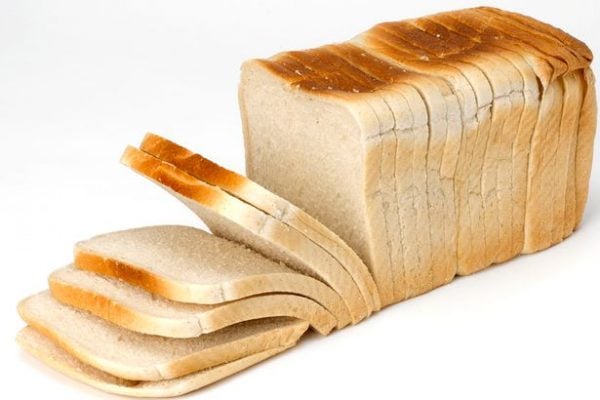
Bread is widely consumed daily across the country especially because it doesn’t have to be cooked before consumption.
Bread belongs to the class of starchy foods and overt consumption increases the risk of getting diabetes.
If you are taking in 100 grams of bread, you are consuming 265 calories, especially if it is white bread.
Some Nigerian-made breads are also not completely bromate free.
Potassium bromate is added to help strengthen the bread dough and this chemical is cancerous.
If you can steer off bread, there are other excellent choices that are low in carbs.
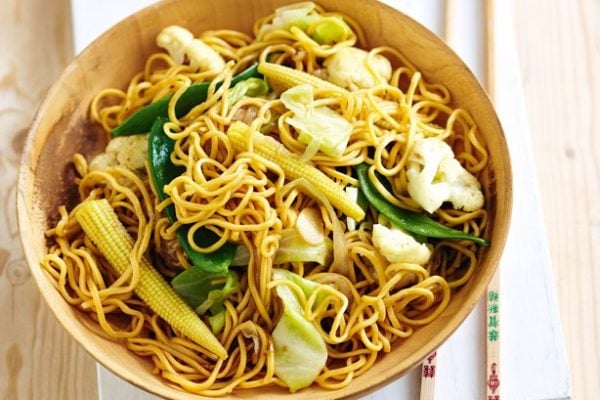
While noodles can’t be called a Nigerian food, it has been adopted into Nigeria’s stream of foods such that it is consumed by both young and old.
Nigerians go for noodles because it is cheap, easy and fast to cook, hence the name “instant noodles.”
Tests have revealed that noodles contain high sodium which aside being cancerous, causes heart disease and skin damage.
Eating too much of noodles is bad for digestion and it also leads to obesity.
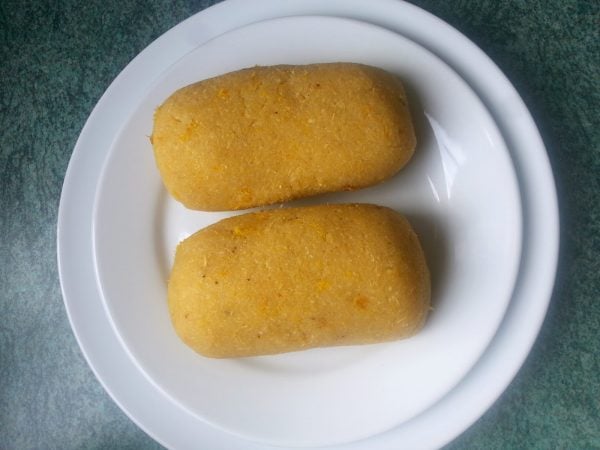
Processed from cassava, garri is a food rich in carbohydrate; both the yellow and the white type.
Garri helps to restore lost energy but a high rate of consumption does more harm than good.
A cup of garri contains about 360 calories, 95% of which is carbohydrates and further consumption with soup, meat and/or fish, increases the level of calories.
Consuming a great deal of starchy foods like eba is like welcoming excess weight with open arms.
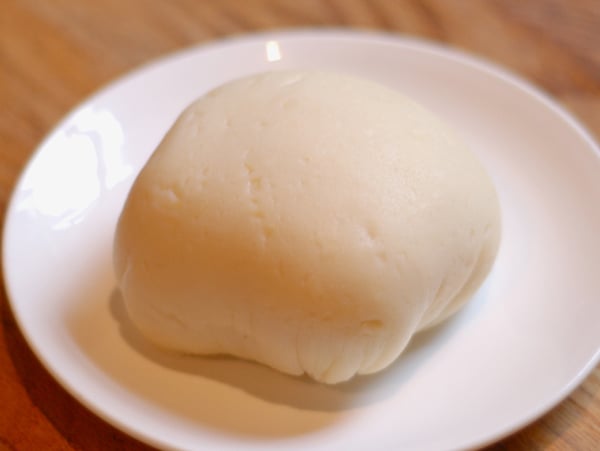
Fufu is another staple food made from cassava and its origin can be traced to Ghana.
Fufu is of good nutritional value as it is rich in protein, fat, carbohydrates, potassium and low in cholesterol.
Some are turned off by the smell that fufu gives and/or the fact that it takes longer time to digest.
Research has it that every part of cassava plant has a toxic chemical called Linamarin.
This chemical, even after boiling the cassava, doesn’t change its state and this could be harmful during digestion.
Also, under-processing of fufu, which is rampant, has harmful implications on the health. This is because the cyanide content is not reduced to a non-toxic state.
Women and children are susceptible to cyanide poisoning as they are usually the ones who carry out the processing of fufu.
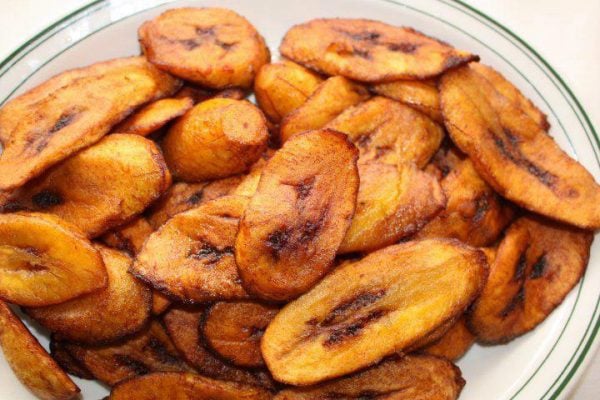
There is a meme trending on social media about plantain which reads, “How can you say in good faith that the God who created plantain doesn’t love you?”.
This is proof of the love people have for plantain.
Granted, plantain is a good source of carbohydrates, vitamin B6, vitamin C and is also a natural remedy for peptic ulcer.
However, plantain contains a considerable amount of carbohydrates and more calories are produced when it is fried in oil.
Also, the water content decreases when fried and this might not be satiating enough.
Integrating plantain into your diet is making way for ample calorie intake. Taking 100 grams of plantain is consuming about 30 grams of carbohydrates, 15 grams of sugar and 120 calories.
Other methods of cooking plantain (aside frying) should be adopted if one cannot live without plantain.

There’s an endless list of flour-based pastries which are baked, fried or roasted and are often taken between meals.
Healthy snacking helps you maintain physical and mental energy and it also helps one have control over main meals.
Snacking is however, only healthy when it is done to control appetite and meet nutritional needs. It shouldn’t become a habit because many snack foods are high in fat, calories, sugar and salt.
One tends to gain extra pounds through added daily calories if snacking is done out of boredom or habit.
Consuming too many sugary pastries could also lead to tooth decay.
Endeavour to avoid buying pastries on the street. Home-made pastries are advisable as one is sure of the type of oil used for the preparation.
Oil when used over time becomes acidic but most sellers tend to keep old oil in use and keep frying with oil which is already harmful to the health.
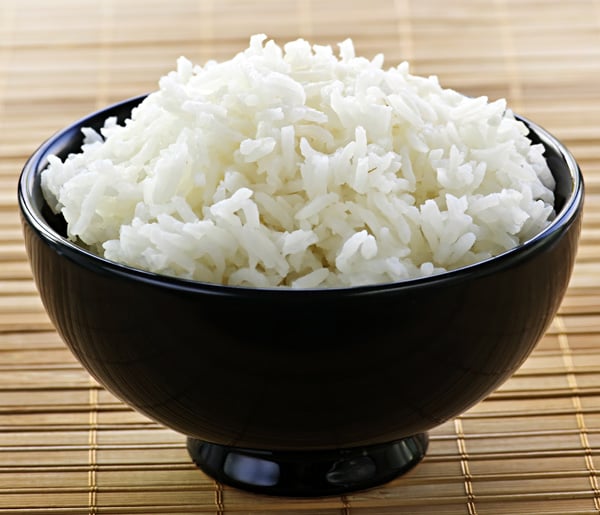
Rice is rich in carbohydrates and fairly low in calories. It is a good source of energy because it is carbohydrate-dense.
Consuming too much of carbohydrate-dense foods may cause one to eat little of other nutritious meals needed for a healthy life.
Eating too much rice could adversely affect glucose metabolism in the body.
White rice contains about 4 grams of fiber per cup and consuming it in excess would fill one up preventing intake of other foods.
White rice is also low in phytic acid because of the bran which is always removed during processing. Ample research has it that white rice increases the risk of getting diabetes.
It is advisable to consume brown rice or reduce the rate of white rice consumption.
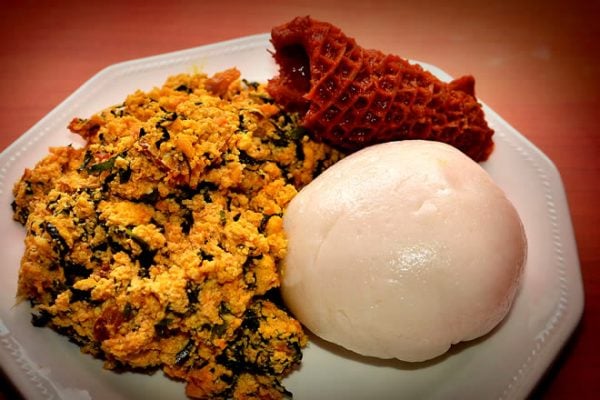
A lot of Nigerians love pounded yam and it is widely consumed across the country.
Pounded yam is a source of carbohydrate and a good source of energy which contains dietary fiber that helps reduce constipation.
Pounded yam is high in calories as a small slice of yam contains about 330 calories and one tin cup of pounded yam contains about 400 calories from carbohydrates alone.
Pounded yam has the highest glycemic index compared to boiled yam and the process of arriving at pounded yam makes carbohydrates more available to enzymes that disintegrate the carbohydrates to glucose.
Eating pounded yam is consuming calories with no real nutrition.
Diabetic patients are advised to steer off foods with high starch and embrace foods with low starch.
Copyright 2024 TheCable. All rights reserved. This material, and other digital content on this website, may not be reproduced, published, broadcast, rewritten or redistributed in whole or in part without prior express written permission from TheCable.
Follow us on twitter @Thecablestyle

If all this classes of food are considered to be harmful, what then should we eat.
i wonder oooo
Dey want make we eat Chinese food .Pls what of our 4 father’s that eat dose food & stay 120 years? D
Our forefathers do not live sedentary lifestyles like we do these days. They walk long distances to farm and hunt. They eat fresher fruits and vegetables and they consume less preservatives and other harmful chemicals.
The trick is to eat these meals but burn them out by exercising.
Meant “did not”
I see an attempt to flood your kitchen with GMD foods. That us the trend. Condemn every indigenous food and force you to ask ‘what then should we eat?’ …that is when GMO foods are introduced as healthiest. That us how they introduced wheat as best for you but fail to inform you that wheat contain harmful chemicals too. Meanwhile Nigeria is biggest importer of US-GROWN wheat. So they created a market for themselves by brainwashing us to discard one indigenous food for theirs. Of all swallow, fufu is safest followed by garri given its processing process. Anyway, I don’t buy into this western crap. They make no meaning to me. I will still get along with fufu, eba etc like my forefathers did. Soon, they will come to tell us that Bush meat is not healthy…rubbish!
What else am i going to eat! I will starve till death Editior!!!
Foods like potatoes, brown rice, plantain, yam/plantain flour,oat, fish instead of meat, Chicken without the skin, fruits and Vegetables. Thank God potatoes and oats can be made into solids for our Swallows. Lots of water, eat moderately. Boil, bake or grill instead of frying. Olive oil, Avocado oil canola oil better than vegetable oils. Palm oil should also be used sparingly because its high in saturated fat which is bad for heart health Lots of exercise also good for overall health There are lots of healthy meals we can be eating instead of those that can cause various disease. With determination and discipline we can live off junk and food that does not benefit our health in anyway. Life is sweeter when spent in good health and remember Health is Wealth.
Saturated fat is healthier than unsaturated fats. Unsaturated fats are unstable and get converted into trans fats in the body which are ‘unnatural’ and highly carcinogenic fat forms. Coconut oil and palm oil are better that those ‘lighter’ oils…
Please how can we make potatoes and oats for swallow. I need your help
Cook the potatoes 🥔 but make sure it’s not over cooked. Then pound it. You could also add a little bit of cooked flour when pounding to make it cling more together like eba.
As for oats, blend into powder and cook like you make amala
You are the best. I sure will take this home. Trust me.
Phytosterols are plant sterols unlike cholesterol which only comes from animals. They are amazing in reducing cholesterol levels. Reduction of cholesterol levels is a good thing so I don’t know why you made it sound like a negative for egusi.
Wetin person want chop again for Nigeria
Sickness can still meet you even when you don’t eat those things so I think we should eat whatever food we like to,
We all lived by the grace of God not by food.
OnlyGod can give longevity, however discipline will be highly appreciated as heaven helps those who help themselves , all these food mentioned if appropriate routine and moderation is applied ,we will derive the necessary nutrition required daily for our wellbeing